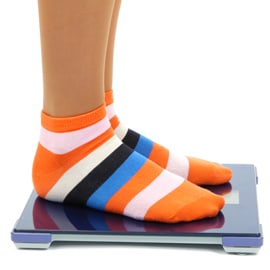Measuring progress after weight loss surgery is more than seeing the numbers decreasing on the scale, although that is certainly an important and encouraging part. It helps to also measure your weight loss progress in other ways that not only reflect your physical changes but also shows improvements in your overall quality of life.
Take into consideration the following factors when measuring your progress after weight loss surgery.
Weighing yourself. Your weight can fluctuate by a few pounds during the day, depending on what you eat and drink. Pick a time of the day to weigh yourself, and stick to it regularly to add consistency to your weight loss measurements.

Calculating your body mass index. One of the frequently used barometers for determining what is and isn’t a healthy weight is body mass index, or BMI. According to the National Heart, Lung, and Blood Institute, BMIs greater than 30 constitute obesity, while BMIs between 25 and 29.9 indicate that an individual is overweight. Track your decrease in your BMI, just as you do your overall weight.
Measuring your circumference. Another yardstick for determining whether you are at increased risk for health concerns is the waist-to-hip ratio (WTH). This is an additional statistic you can use to measure your weight loss progress. In general, individuals with more weight around their middle are at greater risk for health problems such as diabetes and heart disease than those with less weight around their hips. Women with a WTH equal to or greater than 0.85 cm and men with a WTH greater than or equal to 0.90 are at an increased risk of metabolic complications, according to the World Health Organization.
Assessing your physical abilities. As you shed pounds after weight loss surgery, you’ll likely find that you are able to do more physically than in the past. You’ll notice that your strength, stamina, energy level, and ability to move will steadily improve. These improvements in your physical abilities will not only help you to exercise more vigorously but to perform your everyday tasks with greater ease.
Assessing your outlook. If you’ve been obese for a long period of time, it can affect you mentally and emotionally, just as it has affected your body physically. Many years of living with excess weight can take a toll on your confidence and self-esteem. As you continue on your journey of losing weight, you’ll likely discover that your outlook improves as you shed pounds. Take a note of this new found positivity, and embrace the new you.
Remember, the scale is not the only way to measure progress after weight loss surgery. Take into account all of the above factors to evaluate your progress to a healthier you.
Suggested Reading
Long-Term Success with Weight Loss
Eating and Exercise Behavioral Changes to Lose Weight
Eating in Restaurants After Weight Loss Surgery
Also In This Section
- Deep Breathing for Stress-Free Weight Loss
- Be Optimistic about Weight Loss Surgery
- The Wonders of Weight Loss Goals
- Your Weight Loss Surgery Mantra
- Putting an End to a Bad Day
- Lose Weight, Give Back
- Yoga Hiking: Inner Peace, Outer Beauty, All-Around Workout
- Keep Your Friends Close and Your Best Friends Closer
- Think—Don’t Trick—Yourself Healthy
- Finding Inner Peace in a Busy World
- Brain Gain! Weight Loss Surgery Boosts Cognitive Function
- Does This Brain Make Me Look Thin?
- Stop Overeating by Being Mindful
- Losing Weight Will Rock your World
- Tips for Soulful Living
- Common Link between Obesity and Depression
- Bipolar Disorder and Weight Loss Surgery
- Treat Your Mind and Your Weight

